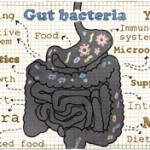All of their findings suggest the microbiome may interact with our diets in many ways, but the direct effects of diet on the microbiome still seem modest. In the 2020 PREDICT 1 study of 1,102 U.S. and U.K. adults with chronic diseases, only daily coffee drinking seemed to have a stronger impact on levels of one gut bug, while most other dietary factors had smaller effects.1 In the 2020 Men’s Lifestyle Validation Study of 307 patients, the direct effect of dietary components, such as fiber intake, on the microbiome were modest overall.2
“Instead, the microbiome’s effect on diet-derived compounds and diet-derived phenotypes was much stronger. Even though fiber only slightly affected the microbiome directly, there was a very strong interaction between your microbiome configuration—in this case, carrying Prevotella copri—and the degree to which fiber intake was protective of systemic inflammation in the form of CRP levels,” said Dr. Huttenhower. “Individuals with P. copri already tended to have good CRP levels, whereas those lacking P. copri were more responsive to fiber intake as a protective factor.”
Most dietary components don’t directly change most microbiome components, but instead, your microbiome may change effects of nutrients, he concluded.
Arthritis Diet at Last?
RA patients often ask rheumatologist Monica Guma, MD, PhD, for dietary recommendations, because they perceive changes in their symptoms if they consume or avoid certain foods.
“People with RA know they have a chronic disease and that they will need chronic medications. They all seek additional sources of relief or treatments with fewer side effects,” including diet, said Dr. Guma, associate professor of medicine at the University of California, San Diego. “They all ask me questions like, ‘What diet would you recommend for me?’ or ‘Would a diet help me take fewer pills?’”
Dietary interventions have never been established as evidence-based complementary therapies in RA, so rheumatologists have no specific recommendations to reply to these questions.
Dr. Guma and her research team conducted a 28-day pilot feasibility study to explore how the diet composition of patients with RA may improve their symptoms, as well as alter their microbiome and/or metabolome, with results published in 2020.3 The small study had no placebo group. Based on past trials of RA patients following Mediterranean and vegetarian diet plans, they designed the ITIS diet to be full of potentially anti-inflammatory foods and practical to follow, she said.4,5 The new diet includes 20% of calories from proteins, 50% from carbohydrates and 30% from fats.



